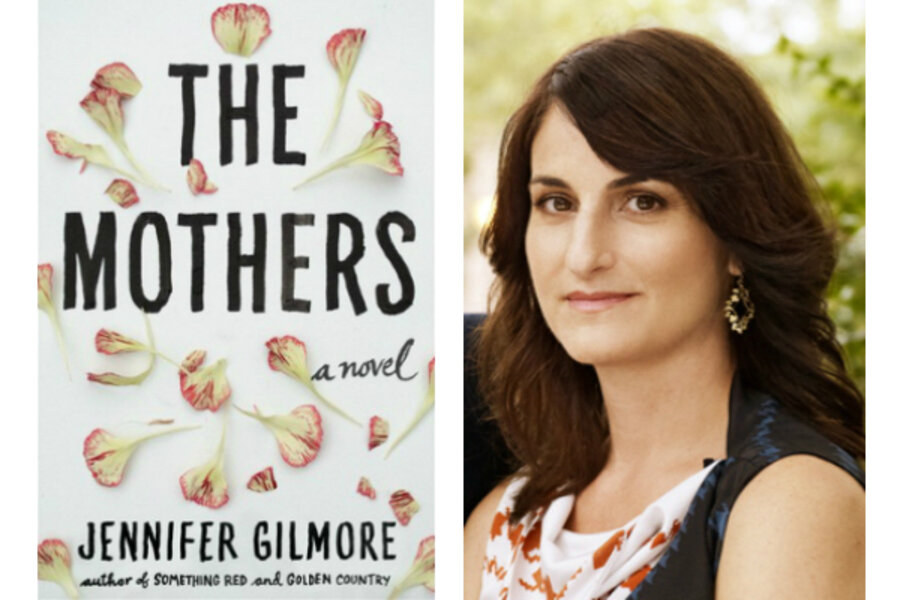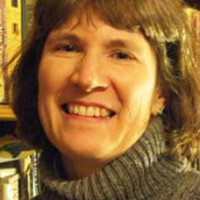Jennifer Gilmore's 'The Mothers': An honest adoption novel
Loading...
For blog updates and more, follow us on Twitter: @Modparenthood.
Adoption is hard to write about. That may sound odd, considering how many novels involve an adoption premise – from "Bleak House" to Harry Potter and every other heroic orphan in a children’s series. Then there are the boatloads of recent memoirs, many written by adoptive parents going to China, Russia, or fill-in-the-blank.
But books about adoption, be they gung-ho celebrations or harrowing tales of woe, tend to gloss the truth. Not because authors are deliberately self-serving, but because they can’t rein in their own biases. Adoptive parents, birthparents, and adoptees have very different perspectives, which means most personal accounts of adoption only offer one slice of a big and messy pie.
Jennifer Gilmore’s new novel, "The Mothers," is a surprising exception. She doesn’t attempt to encompass every point of view. Yet, with scalpel-like precision, Ms. Gilmore takes apart the standard adoptive-parent narrative.
Despite the title, her 2013 novel is not focused on what birthmothers want, and that’s a good thing. There are no guilty adoptive-mom fantasies of poor women giving up their babies for a better life. Instead, almost-40-year-old narrator Jesse obsesses that the “birthmother, that most fragile bird, might fly away.”
In their quest for a baby in a domestic open adoption, Jesse and her husband Ramon care about “the mother” (and the shadowy birthfather who might nix the adoption) mainly as a means to an end. Jesse admits to herself that she’d just like to throw money at the problem, that she’s sick of writing “Dear Birthmother” letters about how much she loves to bake pies. At one point, she bristles:
“Am I allowed to ask where I fit in here? There is a woman who gives birth and that is not I. And then she is in our lives – Ramon’s and mine, ours, whatever that life will look like – however she chooses to be. I accept that, but … when do I get to be the mother?”
And yet, Jesse and Ramon are likable. They’re flawed in the ways many good parents are. What I admire most about this novel is its truthfulness about their inner lives.
In broad strokes, my husband and I experienced much of what these two have already soldiered through by the beginning of "The Mothers": miscarriage, hormone shots, failed IVF treatments, fraught discussions about what kind of adoption to pursue. In our case, we opted for international adoption, partly – as Gilmore makes clear – because that was easier a decade ago.
Regardless, Jesse and Ramon’s travails are familiar to me. But that’s not why I like "The Mothers." In fact, I was prepared to not like it, and I don’t love the “docu-novel” (from the Kirkus review) aspect of Part 1. Close to a hundred pages, more than a third of the book, is spent on the couple traveling to and sitting through a weekend adoption training session in North Carolina.
They’re New Yorkers, an American Jew and an Italian-Spaniard, and they have a predictably crappy time. They (and readers) are thrown a lot of information about open adoption and why private domestic adoptions no longer amount to a finger snap. There’s brooding about the past, too – Jesse’s recovery from cancer years before, meeting Ramon in Italy, his curse-spouting mother. But I wasn’t hooked until they go home to Brooklyn again, with their beloved elderly dog.
Because it’s a novel – not another memoir by an adoptive parent, thank God – and it’s a very good novel despite the leisurely setup. As Jesse frets about calling local social services for their home study, and Ramon tells her “[i]t will get done,” she snaps, “By magical fairies? We need to get on it.” The last paragraphs of Part 1 convey much more about what they’re feeling than they know themselves:
I looked at my watch. ‘Look at the time,’ I said to Ramon.
Neither of us moved. In the hallway the scream of our downstairs neighbor’s child shot through the house. A car alarm went off on our street.
I lay down on the couch next to my husband, my elbows sharp on my knees. ‘It’s so much later than I thought,’ I said, and just like that, the afternoon light slipped out of the living room, and the gray of winter crept in."
Gilmore is a gifted novelist (her "Something Red" was a New York Times Notable Book in 2010), but the success of this highly personal fictional world is not just a matter of good dialogue and a knack for details.
Other recent novels with adoption themes by well-known authors have foundered. Lorrie Moore’s 2009 A Gate at the Stairs, for example, skewers its adoptive mom in a way that would be refreshing if readers actually got a peek at her thoughts. However, that mother is viewed satirically through the eyes of a college-age nanny, with all sorts of darkness but no clarifying light.
What Gilmore achieves is a tight focus on this couple’s relationship, and their competing wishes and selfish acts. It’s not a matter of whether this is “true to life”; it’s that I believe in these characters. Gilmore is brave enough to allow Jesse to be angry, neurotic, cynical, and an astute observer of her own desires:
“If everything about being a mother is a memory—the memory of your own childhood evoked by the sounds and smells and touches of your child and the air and substance that surround her—then working hard to become a mother is about the imagination, an unknown future."
That’s how a novelist thinks of the world. It’s about the stories we all tell and the fantasies we weave, based on uncertain memories and wishes for what we never had. But in "The Mothers," I especially welcome this perspective. It’s a tonic for simplistic notions about why adoptive parents do what they do.
Gilmore wrote this novel while going through her own “long adoption process” with her husband. In the press materials that accompanied my review copy, she’s asked in a Q&A why she wrote a novel instead of a memoir. Her response:
“I felt I could see this couple more clearly – and perhaps be harder on them – if they were fictionalized. The issues that adoption brought up for me [were] better suited, in my experience, to the novel.”
Yes. I can think of very few adoptive-parent memoirs in which the narrator admits to Jesse’s cavalcade of self-doubts and delusions. I’m not sure it’s possible in a book-length memoir about adoption, given the pressure to shape real-life complexity into a narrative arc that ends happily.
"The Mothers" suffers from some of the same limitations, too. Jesse’s (and Gilmore’s) musings about what it means to be “the mother” in contemporary society are heavy handed. Still, I enjoyed Jesse’s weary take on the gaggles of oblivious stroller-rollers, happily chattering about breastfeeding and yogurt pops.
It’s the obliviousness of middle-class biological families that can feel so hurtful if you’re on the outside. At one picnic viewed through Jesse’s eyes, the hordes of young parents with babies and toddlers and mammoth barbecue grills seems like an alien Stepford world. Her friend Helen, with an infant “grunting at her nipple,” has the gall to tell Jesse that holding babies helps women get pregnant. Then:
“Helen popped Ryan off her breast, which for some reason didn’t make him howl, and she held him out to me. I had no choice but to take him, cradling him in the crook of my arm, as I looked out at the party."
If only Gilmore had taken this a step farther. Jesse and Ramon recognize their outcast status, and are by turns wry and raging and sorrowful. But Jesse also seems willing to march right back into Stepford as soon as she gets her child.
Gilmore hints that the one mom with an Ethiopian adoptee at that picnic isn’t part of the crowd and likely never will be. But for Jesse, getting there is all that matters. It’s as if the gates of heaven will open, her doubts will be expunged by the white glare, and she will then become an oblivious mother angel like all the rest.
Such feelings are absolutely realistic. But the narrative becomes smaller here, less wise. Those of us who have already gone down the adoption road know that Jesse’s story is only beginning, whatever the outcome. I’d admire "The Mothers" even more if it weren’t so focused on the adoption process itself – the getting, the wanting, the end point-that-isn’t-the-end.
Waiting for a child, whether biologically your own or through years of paper work, is certainly steeped in fantasy. But for me, the wanting wasn’t everything. I spent time trying to imagine what my child would think of me as he or she grew older and how we’d talk about adoption and what it means to have more than two parents.
A recording of my mental monologue at the time would reveal a river of selfishness and fear – Will he hate me? Will I hate him? Will he leave me forever? – but I felt far less agonized than Jesse about “when do I get to be the mother?” I was more worried about being saddled with the care of another human being for the rest of my life.
In her Q&A, Gilmore rightly emphasizes that adoption “is often about loss”:
“All parties are grieving. Adoption is not for the faint of heart. You will be wrecked. You will go beyond whatever limits you felt possible – financial, emotional, perhaps even ethical. If you stick with it, you will likely get your child, but it will not be an easy road.”
It’s true that adoption isn’t a magical solution for infertility, and private domestic adoption has never been a quick-and-dirty way to score a kid. But Gilmore’s “real life” explanation belies the complexity of her novel. Parenting itself is not for the faint of heart. It pushes us all to our financial, emotional, ethical limits. I’ve been wrecked, but not because I’m an adoptive mom.
The silver lining to adoption, especially of a child who doesn’t look like you, is that you know from the start that he’s not you. He’s his own person. Yet you love him, you care for him, in a way that goes far beyond romantic love and selfish need. For me, that’s the central mystery at the heart of all family stories.
The Christian Science Monitor has assembled a diverse group of the best bloggers out there. Our guest bloggers are not employed or directed by the Monitor and the views expressed are the bloggers' own, as is responsibility for the content of their blogs. Martha Nichols blogs at Athena's Head.








